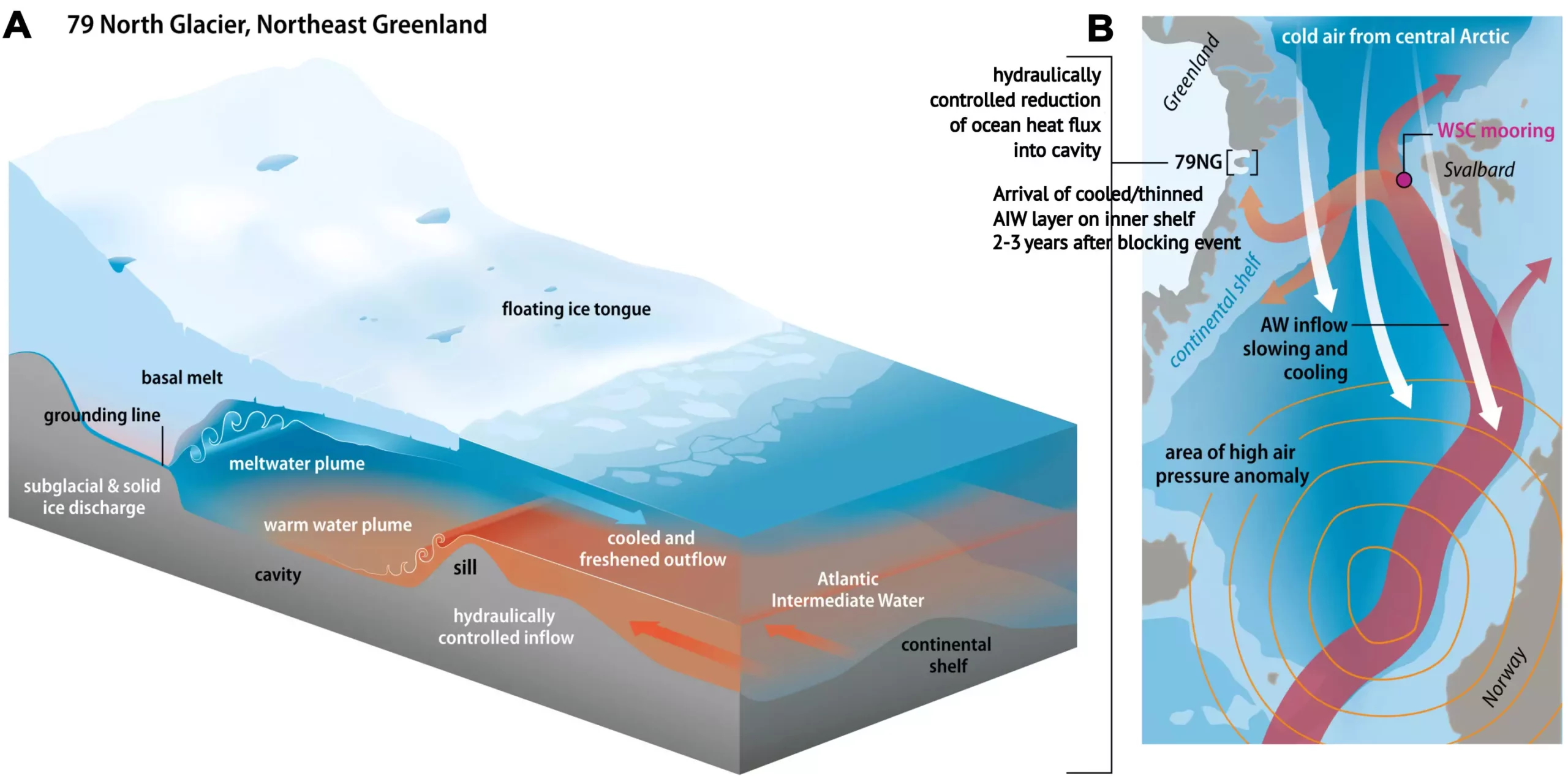Northeast Greenland’s icy landscape is a striking portrait of natural beauty, marred by the stark truths of climate change. Among its notable formations is the 79° N Glacier, the largest floating glacier tongue in the nation. This massive ice structure has become a focal point in climate discussions, representing both the devastating impacts of global warming and the complexities of glacial dynamics. While it is widely acknowledged that the Atlantic Ocean’s warming waters are accelerating the melting of this glacier, recent findings from the Alfred Wegener Institute (AWI) have unraveled an unexpected twist: a significant drop in water temperature within the glacier’s subterranean cavern from 2018 to 2021. This discovery offers a glimmer of hope yet also deepens the enigma of glacial retreat.
Understanding the Recent Findings
Research published in the journal *Science* elucidates the chilling anomaly within the 79° N Glacier’s cavern—where warm Atlantic waters typically enhance melting. Despite the general warming trend of nearby waters, a cooling period occurred, mitigating the melting dynamics of the glacier. Dr. Rebecca McPherson, the lead researcher on the project, noted that initially, water temperatures surged but subsequently fell by 0.65 degrees Celsius. Tracking the temperature changes highlighted a peculiar phenomenon: while the oceanic temperature around the glacier was on an upward trajectory, the water infiltrating the glacier itself experienced significant cooling. This paradox raises essential questions regarding the interplay of ocean currents and atmospheric conditions.
The observed cooling can be traced back to shifts in atmospheric circulation patterns, specifically the phenomenon of atmospheric blocking. High-pressure systems in Europe deviated standard air currents, allowing colder Arctic air to flow into the Norwegian Sea and subsequently into the Fram Strait. This deviation resulted in an unusual cooling of Atlantic waters, showcasing a direct relationship between atmospheric conditions and oceanic temperatures far removed from the ice itself. The intricate dance of wind and currents yielded a situation where, paradoxically, warmer oceans led to colder waters flowing into the glacier’s base.
The implications of these discoveries stretch beyond mere temperature readings. They emphasize how regional meteorological events can have cascading effects on glacial stability and sea-level rise. The AWI team indicated that if the Northeast Greenland Ice Stream were to fully melt, it could contribute approximately one meter to global sea levels. The interconnections between atmospheric events and the ocean’s thermal structure underscore the urgency to understand these interactions for climate prediction.
As scientists strive to disentangle the factors influencing glacier dynamics, the knowledge derived from these studies could reshape predictions surrounding sea-level rise. The expected increase in water temperatures in Fram Strait may not only hint at a return to accelerated melting for the 79° N Glacier but could also forecast broader implications for other glaciers in the region.
In the upcoming summer of 2025, researchers intend to revisit the 79° N Glacier aboard the Polarstern research icebreaker. Given the fluctuating nature of temperature in the Fram Strait, scientists remain vigilant, ready to observe how the glacier’s melting patterns may shift in response to returning warm waters. Such ongoing research is critical in refining our understanding of how these changes will impact global sea levels, marine ecosystems, and coastal communities.
The unveiling of the cooling phenomenon beneath the 79° N Glacier presents both challenges and opportunities for climate science. It prompts a critical examination of current predictive models and highlights the importance of multifaceted approaches in studying glacier dynamics. Atmospheric circulation shapes not only the immediate environment but also distant regions, reflecting the complex interactions within Earth’s climate system.
As we forge ahead, one vital assertion remains: comprehensive understanding is paramount to addressing the challenges posed by climate change. The findings from AWI offer a clearer view of Northeast Greenland’s glaciers, but they also serve as a stark reminder of the interconnectedness of our planet’s systems. By honing in on these intricate relationships, scientists can enhance our ability to forecast the future of our glaciers, ultimately informing policies aimed at mitigating the repercussions of rising sea levels on a global scale.


Leave a Reply